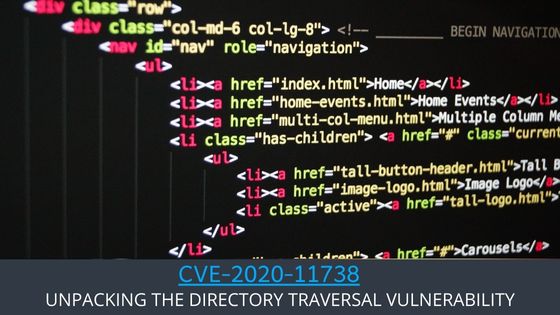In an ongoing effort to safeguard digital landscapes, attention has been drawn to a notable vulnerability in the Snap Creek Duplicator plugin for WordPress, identified as CVE-2020-11738. This vulnerability allows for directory traversal, posing a significant risk to websites using versions of the plugin prior to the security updates released in early 2020. This article will dissect the vulnerability, detail its potential repercussions, and outline necessary mitigation steps.
Overview of CVE-2020-11738
CVE-2020-11738 is characterized by a directory traversal flaw in earlier versions of Snap Creek Duplicator and Duplicator Pro. This vulnerability stems from insufficient input sanitization, which allows attackers to traverse the directory structure of a host and access files outside of the intended directories using relative paths.
Technical Details of CVE-2020-11738
Vector and Severity
The vulnerability scores a 7.5 (HIGH) on the CVSS scale, attributed to its network exploitable nature (AV), low attack complexity (AC), and no required privileges (PR), indicating that the vulnerability is both severe and relatively easy to exploit.
Root Cause
The flaw is due to improper handling of file path inputs, specifically the ability to manipulate the ‘file’ parameter within the Duplicator’s request handling to include ‘../’, leading to directory traversal.
Potential Impact
System Impact
#1 Unauthorized access to files and data which could include sensitive configuration files, leading to further attacks. #2 Compromise of the integrity and availability of the website hosted on the WordPress platform.
Mitigation Strategies
Vendor Recommendations
Snap Creek quickly addressed the issue by releasing updates that remediate the vulnerability—version 1.3.28 for Duplicator Lite and 3.8.7.1 for Duplicator Pro. It is crucial for users to: #1 Update the plugin immediately to the patched versions as specified in the Snap Creek change log. #2 Review other security settings and plugins to ensure no unauthorized changes were made by an attacker prior to the update.
Alternative Actions
In instances where immediate updating is not possible: #1 Restrict access to the plugin’s functionality to trusted administrators only until updates can be applied. #2 Monitor web server logs for unusual access patterns that might indicate attempted exploitation of this vulnerability.
Best Practices for Web Application Security
Regular Software Updates
Maintaining timely updates to all software components of web applications is vital. This ensures protection against known vulnerabilities and reduces the attack surface available to potential attackers.
Enhanced Input Sanitization
Implement rigorous input validation and sanitization measures to prevent similar vulnerabilities from being exploited, especially in applications that accept user inputs.
Security Configurations and Audits
Regular security reviews and audits should be conducted to identify and rectify potential vulnerabilities. Employing a configuration that minimizes permissions and restricts access can prevent many exploitation techniques.
Conclusion
CVE-2020-11738 sheds light on the critical need for robust security measures in web applications, particularly those as widely used as WordPress. By understanding the nature of this vulnerability and adhering to recommended practices, website administrators can safeguard their sites from potential threats.
For further guidance on enhancing your website’s security or addressing specific vulnerabilities, consider reaching out to Datacipher. Our expertise in cybersecurity provides businesses with the tools and knowledge necessary to defend against a spectrum of digital threats.





